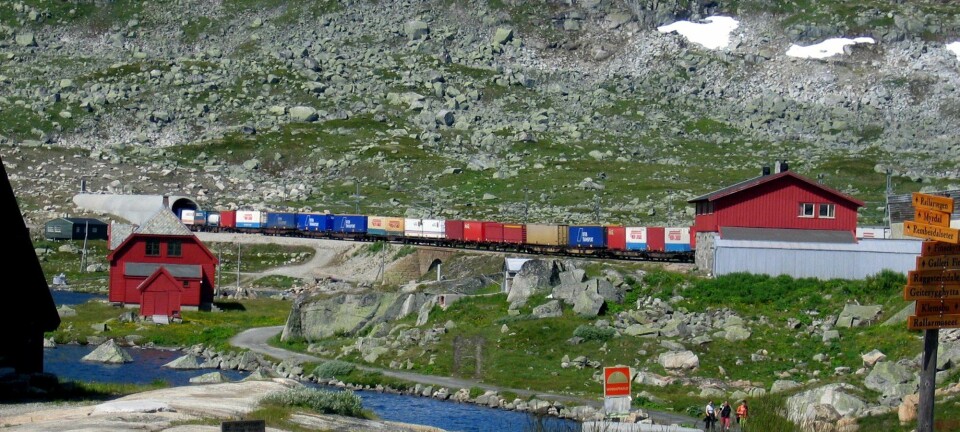
Truckers can help save money and the environment at the same time
Drivers who received initial eco-driving training and active follow-ups cut their diesel consumption by five to nine percent.
Trainings in several settings have shown how a good course in eco-driving can teach lorry drivers and truckers to drive economically. Then a few months go by, and little by little they forget their training strategies and before long they’re back to their prior habits and prior fuel consumption.
Chat with the boss
A report and a monthly chat with the boss, however, can help make the lesson stick.
“We find that the savings persist this way,” says Daniel Ruben Pinchasik.
Pinchasik is a researcher in Norway’s Institute of Transport Economics (TØI) and is working on a doctoral degree in which he looks at ways to reduce CO emissions in the transport industry. Together with colleagues at TØI and BI Norwegian Business School, he has figured out how eco-driving training can sharply reduce fuel consumption.
Electrifying everything will take awhile
“We talk a lot about electrifying trucks, about battery electric and hydrogen electric vehicles, and about the transition to biodiesel and biogas. But many of those solutions aren’t mature yet. They’ll get there, but it’s challenging, and in the big vehicle sector, the freight vehicles require a lot of power,” he says.
In other words: It takes time to shift the transport sector over to another fuel source.
Training, on the other hand, yields faster results. Pinchasik and his colleagues tested 14 professional drivers at Postnord Solution.
First, the drivers drove in their usual fashion for three months. Then half of them received a course in economical driving.

Not complicated
The drivers learned how they could make better use of the vehicle’s mass.
They learned better gear handling, engine handling, speed and various other factors. The group that went through training then received a monthly report with their eco-driving scores, and they reviewed the report with their supervisor, says Pinchasik.
He explains how a car has an ideal speed where the balance between air resistance and fuel consumption is the most efficient.
It’s important to drive at a constant speed, to use the cruise control correctly, and to turn off the engine when stationary and when the engine isn’t needed to operate the tail lift. These are pretty intuitive things for a professional driver, but still easy to overlook.
Painful to change old habits
“One of the common findings in previous studies is that fuel consumption is reduced for a few months after a course in eco-driving. But people often fall back into their old habits. In our project, we found that the reductions persisted. They were somewhat lower towards the end, nine months after the course, but not significantly so,” Pinchasik says.
During that time, the control group also began to get better results.
They got an idea of what their colleagues were doing – not least because those who saw positive results were handed t-shirts that said they were good eco-drivers.
The fact that the control group also gradually improved their fuel consumption, without any additional training, indicates that a lot can be saved with measures that are relatively low-hanging fruit.
Up to nine percent savings
The possible savings for a transport company are between 5.2 and 9.0 percent.
“The greatest potential for improvements is in the handling of the engine and gears,” says Pinchasik.
Since the study, he has talked to several people who produce fleet management systems that keep track of a fleet of vehicles.
“They thought our results were quite in line with their own experience,” says the TØI researcher.
He describes a scenario in which a diesel truck consumes 3.6 litres per mile and drives 80 000 kilometres a year. A single driver could quickly save 1500 to 2000 euros a year just in fuel costs.
“This is an industry that has relatively low margins, and fuel makes up a significant portion of the costs,” Pinchasik says.
Postnord Solution, which had 120 trucks when the survey was conducted, was able to reduce fuel costs by almost 500 000 euros and CO emissions by 1000 tonnes.

Younger people have learned more eco-driving
According to professional consultant Pål Andersen in the Norwegian Traffic School Association, economical driving has grown in importance in driving training now, both for passenger cars and heavier vehicles.
“Driving economically is one of the criteria for getting a driver's license, and in the actual driving test, it’s one of the things you’re tested on and can fail the test for,” he says.
It hasn’t always been this way.
“I’ve been doing traffic training for 30 years. I see that my son, who’s learned eco-driving practically since he was an infant, is much better at driving economically than I am. He thinks about it and has developed good habits for reducing fuel consumption. It’s important to address this early in a person’s training,” says Andersen.
He noticed this when he has students who want training for a category BE licence, to be able to pull a trailer.
“The clientele is more adult. They’re not as concerned about the economy, and environmentally friendly driving is completely foreign for a lot of them,” says Andersen.
Translated by Ingrid Nuse.
Read the Norwegian version of this article on forskning.no
Reference:
Daniel Ruben Pinchasik, Inger Beate Hovi, Eirill Bø and Christian S.Mjøsund: Can active follow-ups and carrots make eco-driving stick? Findings from a controlled experiment among truck drivers in Norway. Energy Research & Social Science, May 2021, doi: 10.1016 / j.erss.2021.102007
































